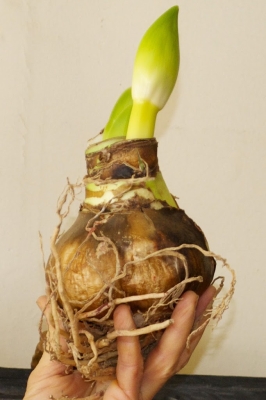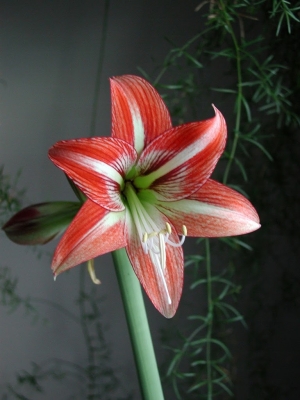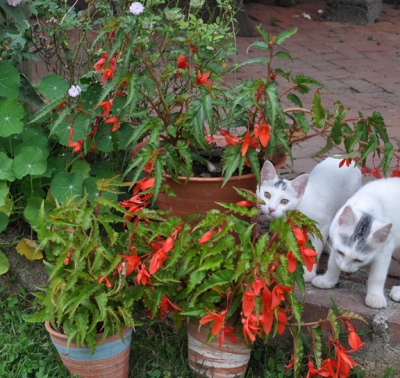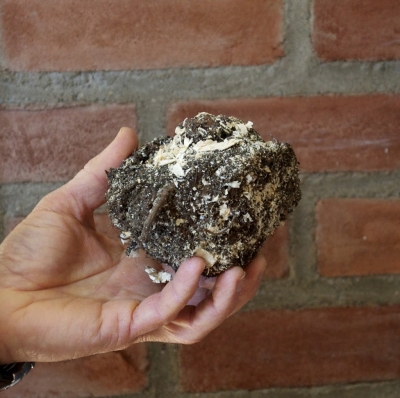UPDATED LECTURE & WORKSHOP SCHEDULE
Mar 2: Miami Valley (Dayton, OH) Garden Conference: WEEDLESS GARDENING
Mar 9: Philadelphia Flower Show: FRUIT GROWING SIMPLIFIED
Mar 10: Philadelphia Orchard Project: LECTURE AND HANDS-ON WORKSHOP ON PRUNING FRUIT TREES, SHRUBS, AND VINES
Mar 16, Thetford, VT: FEARLESS PRUNING
April 6, Maine Garden Day (Lewiston, ME): FRUIT GROWING SIMPLIFIED, MULTI-DIMENSIONAL VEGETABLE GARDENING
April 10, Rosendale (NY) Library: BACKYARD COMPOSTING
April 20, Berkshire Botanical Garden (Stockbridge, MA), GROW FRUIT NATURALLY, BLUEBERRIES: RELIABLE & EASY TO GROW, HEALTHFUL, & DELICIOUS
April 28, WV Master Gardener’s Assoc (Flatwoods, WV): MY WEEDLESS GARDEN
May 11, Margaret Roach’s Garden (Copake Falls, NY): BACKYARD FRUIT LECTURE (morning), GRAFTING WORKSHOP (afternoon)
May 16, Brookside Gardens (Wheaton, MD): MY WEEDLESS GARDEN
June 1, The Cloisters (NYC): MEDIEVAL FRUITS YOUCAN GROW TODAY
————————————
The official start for this year’s growing season, which I count as the day when I sow my first vegetable seeds, will begin momentarily. Actually, the season should have already been underway, as of February 1st, but I put in my seed order a little late so am tapping my foot and (im)patiently waiting for the seeds to arrive in the mail. That first sowing is, of course, indoors, and the seeds will be onions, leeks, and celery. The most interesting of the three, as far as growing, is onion.
Sowing onion seeds indoors would not be a necessity, except that I want to grow onions that will keep until this time next year and that are reasonably large and that taste good. Onion sets — those mini-onion bulbs available everywhere in spring — would be the easiest way to grow onions, but you get little choice of varieties. The best-keeping onions are the so-called American-types, which are relatively firm and pungent. European-type onions are large and sweet, but don’t keep as well.
I’ll soon be sowing seeds of New York Early and Varsity, two American types, and Sedona, a European type. New York early is only mildly pungent, so is good in salad, medium size, and stores well. Varsity has good storage and large size to recommend it. And Sedona, although a European-type, store pretty well; I’ll eat them first. You won’t find any of these varieties as sets in local or mail-order garden stores.
————————————
There’s one more wrinkle in my selection of an onion variety. The plants, whether bulbs, seedlings, or direct-sown seeds, grow well, pumping out leaf after leaf, under cool, moist conditions. But as the growing season moves on and the sun stays above the horizon for a certain number of hours per day — just how long depends on the specific onion variety — a “switch” in the plant flips that tells the plant to stop making new leaves and start pumping energy to making bulbs. In the South, onions are planted either in autumn or midwinter to mature in late winter or early spring. Varieties adapted there are “short-day” varieties that bulb up when days have only about 12 hours of sunlight. Here in New York’s Hudson valley that would happen sometime in March so even if the plants were outdoors, they’d have grown so few leaves that the bulbs would be very puny.
Northern onion varieties are “long-day” types, not bulbing up until daylength is 15 or 16 hours. Here in the Hudson Valley, those daylengths occur in June. The more leaves my onions grow before then, the bigger the bulbs. I could sow the seed outdoors in April and they’ll grow some before that switch flips on. By planting now, more greenery has more time to develop, and the more greenery on the plant before June, the bigger the bulbs.
A Clementine tangerine box is just the right size for sowing 6 rows of onions sees. Once those seeds arrive (tomorrow, I hope), I’ll fill the box with potting soil, make six furrows, and drop 7 seeds per inch into each furrow. Once the seeds are covered and the box watered, the box needs to be kept warm and moist until green sprouts poke through the surface.
—————————————————————
 Onions aren’t the only bulbs that should be getting under way around here.
Onions aren’t the only bulbs that should be getting under way around here.
Two big, fat amaryllis bulbs arrived as mailorder gifts a couple of weeks ago. I’m not a big fan of giant amaryllises, so they just sat in their opened box. They’ve been sprouting and even showing signs of big, fat flower buds. I couldn’t torture them anymore so finally potted them up.


 Down in my cold basement I dug last season’s begonia bulbs (actually, they are tubers, or thickened, underground stems) out of storage. I tucked them in among some wood shavings in an old aquarium last autumn. In contrast to the big, fat amaryllis bulbs, the begonia bulbs didn’t look like much more than rough, brown clods of soil. Moved to warmth, with the sawdust kept moistened with a bit of water — too much and the tubers will rot — those lifeless-looking lumps should sprout leaves, and then, by June, flowers. The appeal of the begonias, which I grew from dust-like seeds a couple of years ago, is that the foliage is attractive and the fire-engine red flowers are, in contrast to those of amaryllis, proportional to the size of the leaves and the plant, and they’re borne nonstop right up until autumn.
Down in my cold basement I dug last season’s begonia bulbs (actually, they are tubers, or thickened, underground stems) out of storage. I tucked them in among some wood shavings in an old aquarium last autumn. In contrast to the big, fat amaryllis bulbs, the begonia bulbs didn’t look like much more than rough, brown clods of soil. Moved to warmth, with the sawdust kept moistened with a bit of water — too much and the tubers will rot — those lifeless-looking lumps should sprout leaves, and then, by June, flowers. The appeal of the begonias, which I grew from dust-like seeds a couple of years ago, is that the foliage is attractive and the fire-engine red flowers are, in contrast to those of amaryllis, proportional to the size of the leaves and the plant, and they’re borne nonstop right up until autumn.  Down in my cold basement I dug last season’s begonia bulbs (actually, they are tubers, or thickened, underground stems) out of storage. I tucked them in among some wood shavings in an old aquarium last autumn. In contrast to the big, fat amaryllis bulbs, the begonia bulbs didn’t look like much more than rough, brown clods of soil. Moved to warmth, with the sawdust kept moistened with a bit of water — too much and the tubers will rot — those lifeless-looking lumps should sprout leaves, and then, by June, flowers. The appeal of the begonias, which I grew from dust-like seeds a couple of years ago, is that the foliage is attractive and the fire-engine red flowers are, in contrast to those of amaryllis, proportional to the size of the leaves and the plant, and they’re borne nonstop right up until autumn.
Down in my cold basement I dug last season’s begonia bulbs (actually, they are tubers, or thickened, underground stems) out of storage. I tucked them in among some wood shavings in an old aquarium last autumn. In contrast to the big, fat amaryllis bulbs, the begonia bulbs didn’t look like much more than rough, brown clods of soil. Moved to warmth, with the sawdust kept moistened with a bit of water — too much and the tubers will rot — those lifeless-looking lumps should sprout leaves, and then, by June, flowers. The appeal of the begonias, which I grew from dust-like seeds a couple of years ago, is that the foliage is attractive and the fire-engine red flowers are, in contrast to those of amaryllis, proportional to the size of the leaves and the plant, and they’re borne nonstop right up until autumn.




